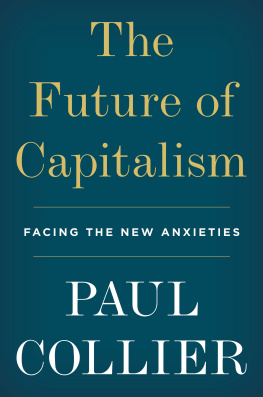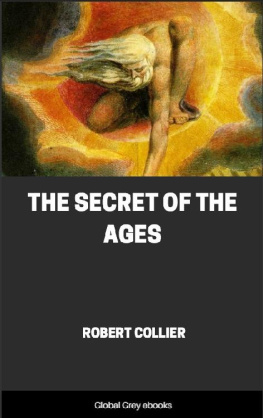
Great Clarendon Street, Oxford OX2 6DP
Oxford University Press is a department of the University of Oxford.
It furthers the Universitys objective of excellence in research, scholarship,
and education by publishing worldwide in
Oxford New York
Auckland Cape Town Dar es Salaam Hong Kong Karachi
Kuala Lumpur Madrid Melbourne Mexico City Nairobi
New Delhi Shanghai Taipei Toronto
With offices in
Argentina Austria Brazil Chile Czech Republic France Greece
Guatemala Hungary Italy Japan Poland Portugal Singapore
South Korea Switzerland Thailand Turkey Ukraine Vietnam
Oxford is a registered trade mark of Oxford University Press
in the UK and in certain other countries
Published in the United States
by Oxford University Press Inc., New York
Katharine A. Craik 2006
The moral rights of the author have been asserted
Database right Oxford University Press (maker)
First published as an Oxford Worlds Classics paperback 2006
All rights reserved. No part of this publication may be reproduced,
stored in a retrieval system, or transmitted, in any form or by any means,
without the prior permission in writing of Oxford University Press,
or as expressly permitted by law, or under terms agreed with the appropriate
reprographics rights organization. Enquiries concerning reproduction
outside the scope of the above should be sent to the Rights Department,
Oxford University Press, at the address above
You must not circulate this book in any other binding or cover
and you must impose this same condition on any acquirer
British Library Cataloguing in Publication Data
Data available
Library of Congress Cataloging in Publication Data
Collier, Jane, 1715?1755.
An essay on the art of ingeniously tormenting / Jane Collier; edited with an introduction
and notes by Katharine A. Craik.
p. cm. (Oxford worlds classics)
Includes bibliographical references.
1. WomenConduct of lifeHumorEarly works to 1800. 2. Interpersonal relationsHumor
Early works to 1800. 3. Conduct of lifeHumorEarly works to 1800. I. Craik, Katharine A.
II. Title. III. Oxford worlds classics (Oxford University Press)
PN6231.W6C65 2006 824.6dc22 2005030186
Typeset in Ehrhardt
by RefineCatch Limited, Bungay, Suffolk
Printed in Great Britain by
Clays Ltd, St. Ives plc.
ISBN 0192805525 9780192805522
1
OXFORD WORLDS CLASSICS
For over 100 years Oxford Worlds Classics have brought readers closer to the worlds great literature. Now with over 700 titlesfrom the 4,000-year-old myths of Mesopotamia to the twentieth centurys greatest novelsthe series makes available lesser-known as well as celebrated writing.
The pocket-sized hardbacks of the early years contained introductions by Virginia Woolf, T. S. Eliot, Graham Greene, and other literary figures which enriched the experience of reading. Today the series is recognized for its fine scholarship and reliability in texts that span world literature, drama and poetry, religion, philosophy and politics. Each edition includes perceptive commentary and essential background information to meet the changing needs of readers.
Refer to the to navigate through the material in this Oxford Worlds Classics ebook. Use the asterisks (*) throughout the text to access the hyperlinked Explanatory Notes.
OXFORD WORLDS CLASSICS

JANE COLLIER
An Essay on the Art of Ingeniously Tormenting

Edited with an Introduction and Notes by
KATHARINE A. CRAIK

OXFORD WORLDS CLASSICS
AN ESSAY ON THE ART OF INGENIOUSLY TORMENTING
JANE COLLIER was baptized in January 1715 at Steeple Langford in Wiltshire, one of four children of the philosopher and clergyman, the Reverend Arthur Collier. Her family moved to lodgings in Salisbury in 1716 when they encountered financial difficulties, and it was here that Collier grew up and was educated. Jane, along with her sister Margaret, learned Latin and Greek from her father, who died in 1732. Collier moved to London in the 1740s, where she met and became a trusted friend of some of the most prominent writers of her time, including Samuel Richardson and Henry and Sarah Fielding. Her first published work was An Essay on the Art of Ingeniously Tormenting (1753). She later collaborated with Sarah Fielding on her only other surviving work, The Cry (1754). Collier never married, and she died in London in 1755.
KATHARINE A. CRAIK completed her doctoral research at Kings College Cambridge and is a Lecturer and Junior Research Fellow at Worcester College Oxford. She has published on Shakespeare, Spenser, Jonson, and their contemporaries and is writing a book entitled Writing, Sensation, and the Origins of Pornography in Early Modern England.
To my husband Steve,
patient recipient of many an ingenious torment
ACKNOWLEDGEMENTS
I WOULD like to thank Markman Ellis for introducing me to Jane Collier and for reading the introduction to this edition, Martin Butler for tracking down Colliers reference to Ben Jonson, and Judith Luna at OUP for her many excellent suggestions and corrections. I am particularly grateful to Elizabeth and Alexander Craik who helped with the introduction and much more besides.
CONTENTS
INTRODUCTION
JANE COLLIERS An Essay on the Art of Ingeniously Tormenting is a courageous social satire published at a time when satires were usually written by and for men. It is also an advice book, a handbook of anti-etiquette, and an energetic comedy of manners. Although addressed in part to husbands and fathers, The Art was written first and foremost for an audience of women in their capacity as wives, mothers, friends, and the mistresses of servants. Collier engages with some of the most pressing debates of her time including the controversy surrounding womens education, questions of civility and good manners, and emerging notions of bourgeois domesticity. Responding wittily and often savagely to available paradigms of feminine virtue, Collier jettisons ladylike meekness in favour of assertiveness, docility in favour of bloody-mindedness, and rational behaviour in favour of studied petulance. Describing methods for teasing and mortifying (p. 17) others in a variety of different social situations by laying traps for their desires and affections, Collier tutors her readers in how to make themselves an insufferable nuisance to everyone around them. The Art provides a fascinating glimpse into the imaginative life of an intelligent eighteenth-century woman. It also suggests, in colourful terms, the difficulties women experienced in exerting their influence in private and public lifeand the ways they got round them. Colliers frank, outspoken voice gave her the freedom not only to dispense with social constraints, particularly those affecting women, but also to put a match to such constraints and gleefully watch them burn.
The authors of conduct books for ladies had been arguing for decades that behaving in an ungovernable fashion made women a torment to themselves as well as to others. In
Next page










